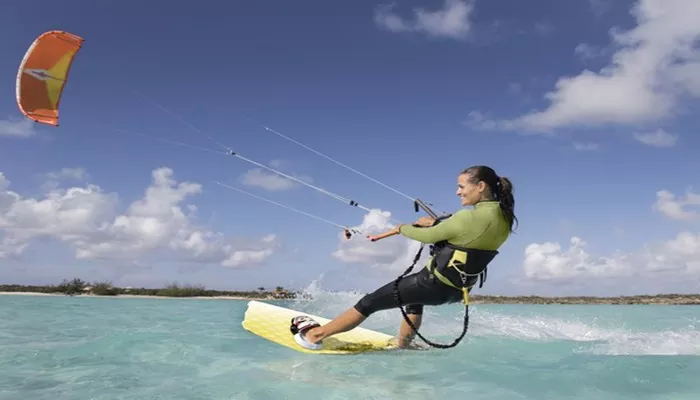Kite surfing is an exhilarating water sport that combines elements of surfing, wakeboarding, and windsurfing. With the power of the wind propelling you across the water, this sport offers an incredible sense of freedom and adventure. However, learning kite surfing requires patience, practice, and proper instruction. In this guide, we will cover everything you need to know to start kite surfing safely and effectively.
Understanding Kite Surfing Basics
Before hitting the water, it is essential to understand the basic principles of kite surfing. This includes familiarizing yourself with the necessary equipment, wind conditions, and safety guidelines.
Essential Kite Surfing Equipment
To begin kite surfing, you need the following equipment:
Kite: The main propulsion system; different sizes are available for various wind conditions.
Control Bar and Lines: Used to steer the kite and control power.
Harness: Connects you to the kite, distributing the pull across your body.
Board: The platform you stand on, similar to a wakeboard or surfboard.
Safety Leash and Release System: Essential for disconnecting from the kite in an emergency.
Wetsuit and Helmet: Provides protection and warmth in different water conditions.
Understanding Wind Conditions
Wind is the driving force behind kite surfing, so learning to read the wind is crucial:
Wind Speed: Ideal beginner conditions range from 12 to 20 knots.
Wind Direction: Side-onshore wind is the safest for beginners.
Weather Awareness: Avoid storms, offshore winds, and gusty conditions.
Taking Kite Surfing Lessons
While some may be tempted to learn on their own, taking lessons from a certified instructor significantly enhances safety and learning efficiency.
Choosing a Kite Surfing School
Look for schools that offer:
- Certified instructors (e.g., IKO or BKSA certification)
- Small student-to-instructor ratios
- Safety-focused training programs
- Equipment rental and insurance options
Beginner Lesson Breakdown
Most kite surfing lessons follow a structured progression:
Basic Theory and Safety – Understanding wind, weather, and safety procedures.
Trainer Kite Practice – Flying a small kite to learn control without the board.
Body Dragging – Using the kite to propel yourself in the water without the board.
Water Start – Combining the kite and board to begin riding.
Riding and Controlling Speed – Mastering balance and maneuvering techniques.
Practicing Essential Skills
Once you have completed lessons, practice is crucial for mastering kite surfing. Focus on refining key techniques.
Kite Control and Steering
Maintain a neutral position at 12 o’clock when not moving.
Learn to generate power by moving the kite in a figure-eight motion.
Practice depowering the kite to regulate speed and stability.
Water Start and Balance
Start with the board slightly angled upwind.
Apply gentle power to lift yourself onto the board smoothly.
Keep your weight centered to maintain stability.
Riding Upwind
Shift your body weight slightly back and edge the board against the wind.
Keep the kite at an optimal position (10 or 2 o’clock).
Use small corrections to maintain direction.
Common Mistakes and How to Avoid Them
Overpowering the Kite
Beginners often pull too hard on the bar, causing the kite to become unstable. Instead, use gentle inputs and let the wind do the work.
Poor Body Position
Leaning too far back or standing too upright can affect control.
Maintain a relaxed posture with bent knees and a low center of gravity.
Ignoring Safety Precautions
Always check your gear, be aware of your surroundings, and use the safety release system when necessary.
Progressing to Advanced Techniques
Once you are comfortable riding, you can start exploring advanced techniques:
Jumping and Air Tricks – Using the kite’s lift to jump and perform tricks.
Riding Waves – Combining kite surfing with traditional wave riding.
Freestyle and Racing – Competing in slalom or speed races.
Final Tips for Success
Practice Consistently – The more time you spend on the water, the faster you’ll improve.
Respect Other Riders – Follow right-of-way rules to ensure safety.
Stay Fit and Flexible – Strengthening your core and improving flexibility enhances control.
Enjoy the Process – Kite surfing is a journey; embrace each learning stage with enthusiasm.
Conclusion
Learning kite surfing is an exciting challenge that rewards patience and dedication. By understanding the fundamentals, taking lessons, and practicing regularly, you can safely enjoy the thrill of gliding across the water. Whether you aspire to cruise along the shore or perform aerial tricks, kite surfing offers endless possibilities for adventure and personal growth.

